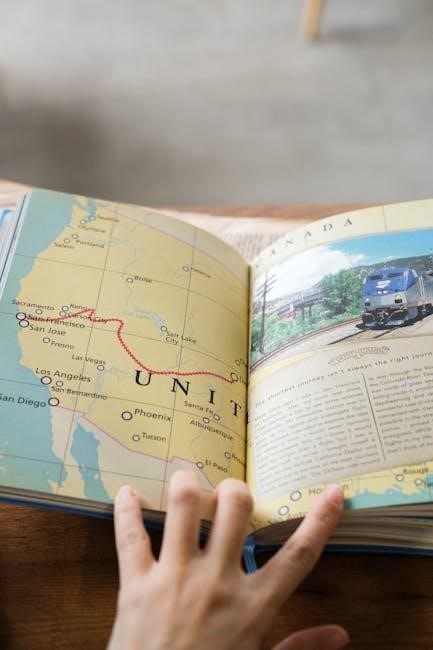Discover the innovative Scratch and Sniff Guide to Wine, an interactive tool that helps readers explore wine aromas through scent, making wine tasting more engaging and accessible for all.
What is a Scratch and Sniff Guide?
A Scratch and Sniff Guide is an interactive tool designed to help users identify and explore different scents, particularly in the context of wine. By incorporating scent-infused cards, this guide allows readers to Scratch and Sniff their way through various aromas commonly found in wine, such as fruity, floral, and woody notes. This innovative approach makes wine tasting more accessible and engaging, providing a hands-on learning experience. The guide typically includes descriptions of wine varieties and their associated scents, enabling users to match what they smell with specific wines. It’s a fun and educational way to deepen one’s understanding of wine aromas and enhance their appreciation for the complexities of wine;
Benefits of Using a Scratch and Sniff Guide for Wine
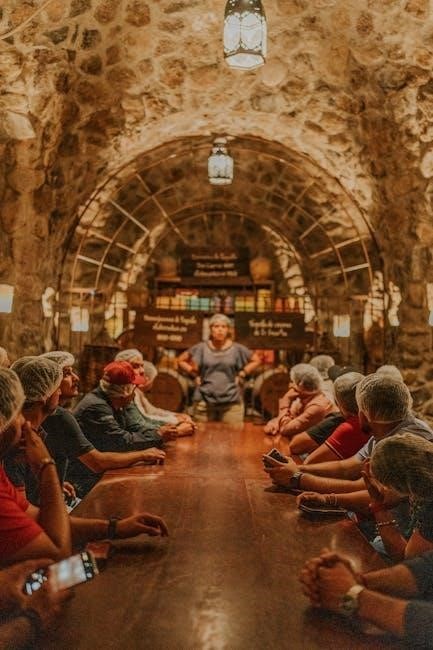
A Scratch and Sniff Guide for Wine offers numerous benefits, making it an invaluable tool for both novices and enthusiasts. It enhances engagement by providing an interactive way to explore wine aromas, helping users connect scents to specific wine varieties. This hands-on approach simplifies learning, making complex wine profiles more accessible. It also fosters a deeper appreciation for the nuances of wine, encouraging experimentation and exploration. Additionally, the guide acts as a memory aid, helping users remember distinct aromas and associate them with particular wines. Its fun and educational nature makes it a great resource for wine tastings and educational settings, democratizing the often-intimidating world of wine appreciation.

The Science Behind Scratch and Sniff Technology
Scratch and sniff technology uses micro-encapsulated fragrances that release when scratched, engaging the sense of smell to enhance sensory experiences, like identifying wine aromas effectively.
How Scratch and Sniff Cards Work
Scratch and sniff cards are designed with micro-encapsulated fragrances embedded in coated paper. When scratched, the capsules release specific scents, simulating wine aromas like fruity or floral notes, aiding in identification and learning.
The Role of Smell in Wine Tasting
Smell plays a crucial role in wine tasting, as it contributes up to 80% of the flavor experience. Our sense of smell detects volatile compounds in wine, translating them into recognizable aromas. These scents can evoke memories and emotions, enhancing the tasting experience. Scratch and sniff guides leverage this by simulating wine aromas, helping tasters identify notes like citrus, berries, or vanilla. This sensory interaction trains the nose to distinguish subtle differences, improving overall wine appreciation. By engaging the olfactory system, these tools make the complex world of wine more accessible and enjoyable for both novices and experts. Smell is truly the gateway to understanding wine’s depth and complexity.

Understanding Wine Aromas
Wine aromas are categorized into fruity, floral, and woody notes, helping identify wine varieties and enhancing the tasting experience by revealing complexity and depth in each sip.
Common Fruity Aromas in Wine
Fruity aromas in wine are among the most recognizable, ranging from citrus and green apple to berries and tropical notes. These scents often indicate the grape variety and ripeness. For example, Sauvignon Blanc may evoke lemon or grapefruit, while Pinot Noir might suggest cherry or raspberry. Tropical aromas like pineapple or mango are common in richer, sweeter wines. The Scratch and Sniff Guide simplifies identification by offering scent comparisons, helping novices and experts alike pinpoint fruity notes. This interactive approach enhances wine appreciation by linking specific fragrances to wine profiles, making the tasting experience more engaging and educational. Fruity aromas are a key element in understanding a wine’s character and origin.

Floral and Herbal Notes in Wine
Floral and herbal notes in wine add complexity and depth to its aroma profile. Scents like rose, lavender, and jasmine are common in wines such as Riesling or Gewürztraminer. Herbal notes, including grass, hay, or eucalyptus, are often found in Sauvignon Blanc or Cabernet Sauvignon. These aromas arise from grape varieties, winemaking techniques, and terroir. The Scratch and Sniff Guide provides distinct scents for users to identify these nuances, enhancing their ability to detect floral and herbal undertones. This interactive approach simplifies the learning process, making it easier for enthusiasts to recognize and appreciate these subtle yet significant elements in wine. By mastering these scents, wine lovers can deepen their understanding and enjoyment of various wine styles.
Oak and Woody Aromas in Wine
Oak and woody aromas in wine are often associated with aging processes, particularly in oak barrels. Scents like vanilla, caramel, and toasted wood are common, especially in wines such as Chardonnay or Cabernet Sauvignon. These aromas develop from the interaction of wine with oak, which can also add hints of spice or smoke. The Scratch and Sniff Guide includes specific cards to help identify these woody notes, allowing users to distinguish between new and old oak influences. By mastering these scents, wine enthusiasts can better appreciate the complexity added by oak aging. This feature of the guide enhances the overall wine-tasting experience, making it easier for novices and connoisseurs alike to recognize and enjoy these subtle yet impactful aromas.
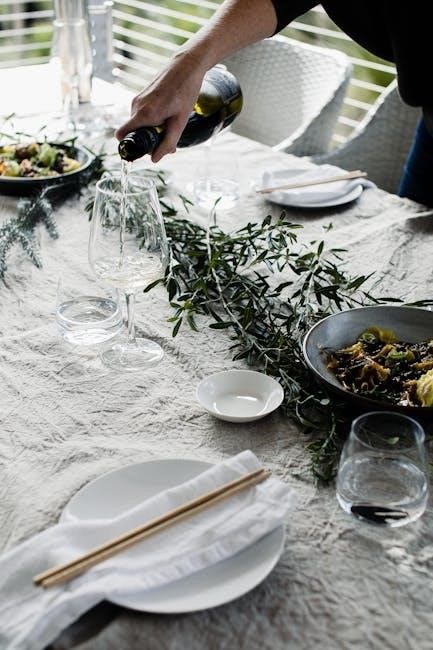
How to Use a Scratch and Sniff Guide
Using a Scratch and Sniff Guide involves identifying wine aromas by scratching scent-infused cards or pages to release specific fragrances. Start by familiarizing yourself with the scents, then compare them to the wine’s aroma during tasting. This interactive method helps enhance your sense of smell and appreciation for wine’s complexity. Ideal for both novices and experienced drinkers, it offers a hands-on approach to understanding various wine notes, making the tasting experience more engaging and educational.
Step-by-Step Guide to Scratching and Sniffing
Start by selecting a specific wine variety or aroma card from your guide.
Gently scratch the designated area on the card to release the embedded scent.
Bring the card to your nose and inhale deeply to identify the aroma.
Compare the scent with the wine you are tasting, noting similarities or differences.
Repeat the process with other scents to broaden your recognition of wine aromas.
Record your observations to track your progress and refine your palate over time.
Matching Scents to Wine Varieties
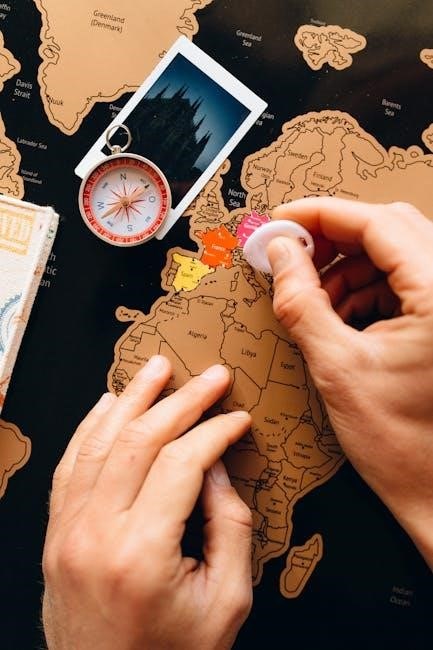
Using a Scratch and Sniff guide, you can easily match specific scents to wine varieties. For example, citrus notes like lemon or grapefruit often align with crisp whites such as Sauvignon Blanc. Fruity aromas like strawberry or raspberry are commonly found in light-bodied reds like Pinot Noir. Floral scents, such as rose or jasmine, are typical in aromatic whites like Gewürztraminer. Woody and vanilla notes from oak aging are often associated with bold reds like Cabernet Sauvignon or rich whites like Chardonnay. By comparing the scents in your guide to the wine in your glass, you can identify the wine’s characteristics and enhance your tasting experience.

Advanced Techniques for Wine Aroma Identification
Explore advanced methods to refine your sense of smell, such as blending scents and identifying nuanced notes, to deepen your wine tasting experience with precision.
Layering Scents and Complex Aromas
Mastering the art of layering scents allows you to identify complex aromas in wine. Start by detecting dominant notes, then gradually uncover subtle undertones. This technique enhances your ability to discern various components, such as fruity, floral, and woody elements, which often blend harmoniously. Practice with scratch and sniff cards to refine your sense of smell, enabling you to distinguish between primary and secondary aromas. Over time, this skill will elevate your wine tasting experience, helping you appreciate the depth and complexity of different varieties. Regular practice is key to improving your olfactory skills and fully enjoying the nuances of wine.
Training Your Nose for Better Wine Appreciation
Training your nose is essential for enhancing wine appreciation. Begin by familiarizing yourself with basic scents using scratch and sniff cards, focusing on fruits, flowers, and spices. Regular practice helps your brain associate specific smells with wine notes. Start with single aromas, then gradually explore combinations to recognize layered scents. Keep a journal to track your observations, noting how aromas evolve in different wines. Over time, this practice sharpens your olfactory memory, allowing you to identify subtle nuances in wine. Consistency is key; dedicate a few minutes daily to scent exercises. This disciplined approach will transform your wine tasting into a more informed and enjoyable experience.
The Scratch and Sniff Guide to Wine revolutionizes how we experience wine, simplifying complex aromas into an interactive, sensory journey. It empowers enthusiasts to better appreciate wine’s nuances, making the world of wine more accessible and enjoyable for all.
The Future of Scratch and Sniff Wine Guides
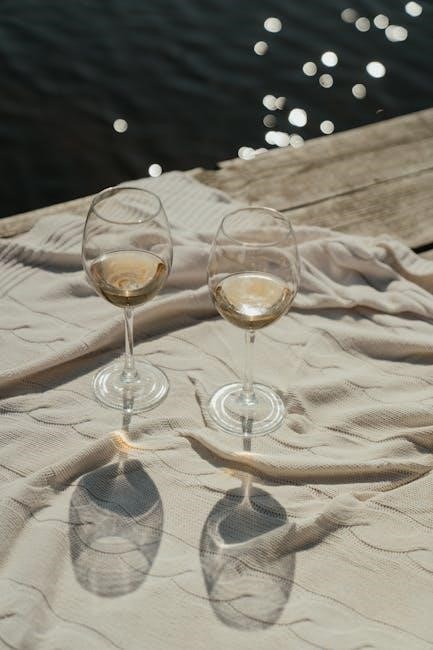
The Scratch and Sniff Guide to Wine is poised to evolve with advancements in scent technology and interactive learning tools. Future editions may incorporate digital integration, allowing users to explore aromas alongside virtual wine tastings. The guide could also expand to cover more wine regions and rare varieties, catering to both novices and connoisseurs. Additionally, educators and wineries might adopt this format for workshops and tastings, making wine education more immersive. As technology advances, the Scratch and Sniff Guide could become a standard tool in wine appreciation, bridging the gap between sensory experience and knowledge. Its potential to innovate wine education is limitless.
